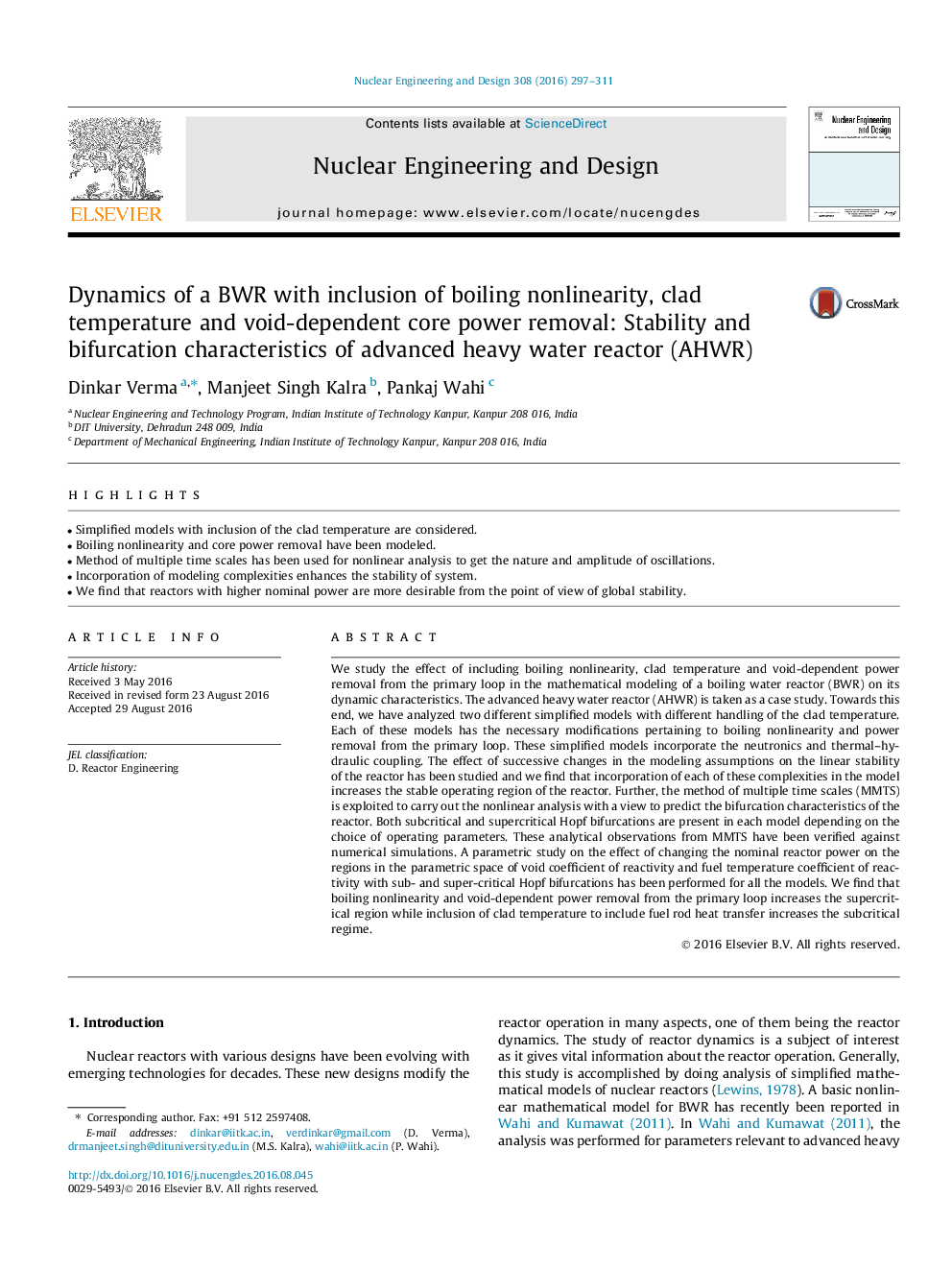| Article ID | Journal | Published Year | Pages | File Type |
|---|---|---|---|---|
| 4925822 | Nuclear Engineering and Design | 2016 | 15 Pages |
Abstract
We study the effect of including boiling nonlinearity, clad temperature and void-dependent power removal from the primary loop in the mathematical modeling of a boiling water reactor (BWR) on its dynamic characteristics. The advanced heavy water reactor (AHWR) is taken as a case study. Towards this end, we have analyzed two different simplified models with different handling of the clad temperature. Each of these models has the necessary modifications pertaining to boiling nonlinearity and power removal from the primary loop. These simplified models incorporate the neutronics and thermal-hydraulic coupling. The effect of successive changes in the modeling assumptions on the linear stability of the reactor has been studied and we find that incorporation of each of these complexities in the model increases the stable operating region of the reactor. Further, the method of multiple time scales (MMTS) is exploited to carry out the nonlinear analysis with a view to predict the bifurcation characteristics of the reactor. Both subcritical and supercritical Hopf bifurcations are present in each model depending on the choice of operating parameters. These analytical observations from MMTS have been verified against numerical simulations. A parametric study on the effect of changing the nominal reactor power on the regions in the parametric space of void coefficient of reactivity and fuel temperature coefficient of reactivity with sub- and super-critical Hopf bifurcations has been performed for all the models. We find that boiling nonlinearity and void-dependent power removal from the primary loop increases the supercritical region while inclusion of clad temperature to include fuel rod heat transfer increases the subcritical regime.
Related Topics
Physical Sciences and Engineering
Energy
Energy Engineering and Power Technology
Authors
Dinkar Verma, Manjeet Singh Kalra, Pankaj Wahi,
